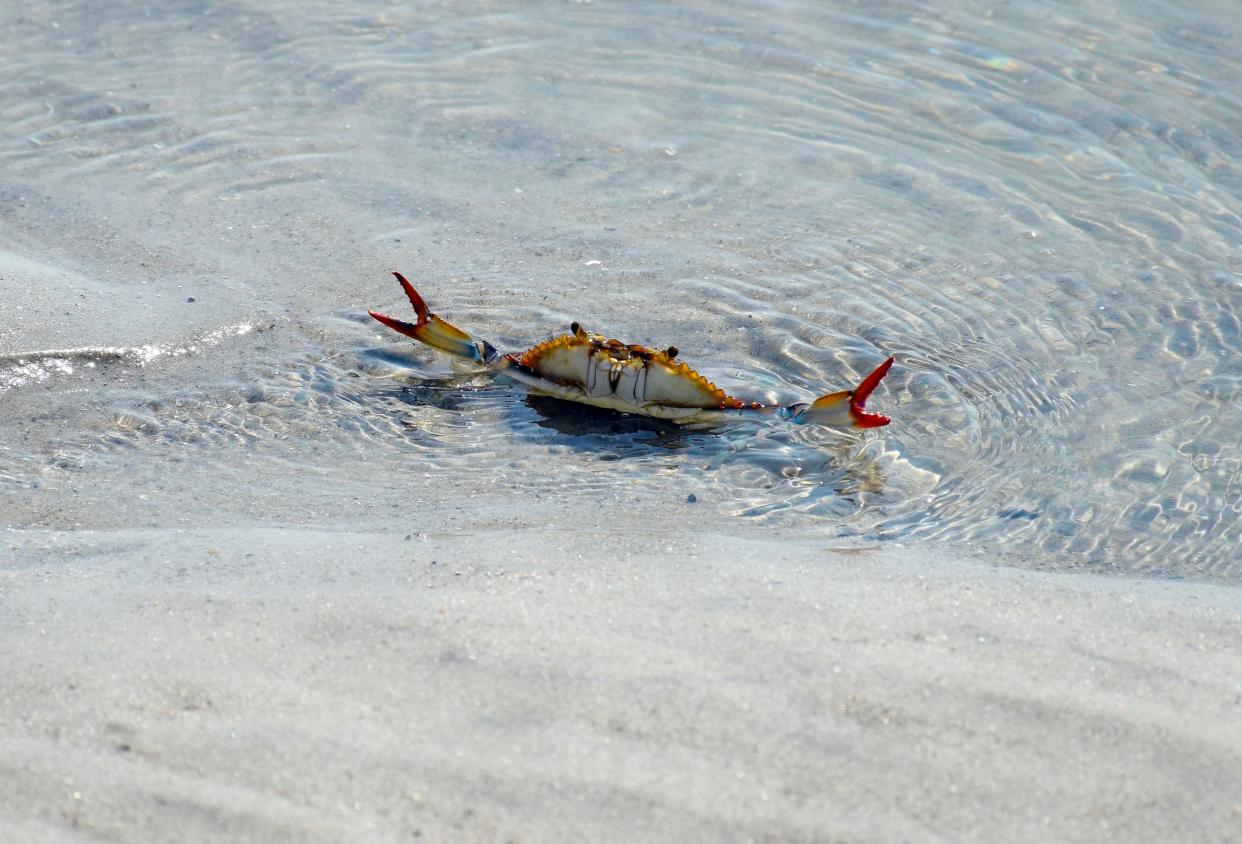What do blue crabs and shrimp have in common? They're this columnist's favorite crustaceans.

Living and studying the St. Johns River has many side benefits. For one thing, it is home to two of my favorite crustaceans.
Some longtime readers of River Life might recall that the species nearest and dare I say dearest to me is the blue crab. Students joke about how animated I become when discussing or describing them. But my interest in shrimp is a close second on a very long list.
Having grown up in Norfolk, Va., on the Elizabeth River near the Chesapeake Bay, I fished and crabbed most of my early years. I followed that interest when I was in graduate school at the University of Virginia where I did my master’s thesis on the swimming leg musculature of Callinectes sapidus, the Chesapeake Blue Crab.
The name Callinectes means “beautiful swimmer,” while sapidus means “tasty or savory.” If you have ever had the pleasure to watch a blue crab swim, you know how elegant it is. The rear swimming legs provide the power while the front legs lift the crab up into the water. The trailing pincher serves as the rudder to steer the crab.
And if you have ever eaten she-crab soup or crab cakes, or participated in crab boil, you know how good they are to eat.
Quinton White: Blue crabs are beautiful, savory swimmers
River Life: Oh, an abundance of fish there are in the St. Johns; tiny anchovies lead the way
My other favorite crustacean is actually several species of shrimp that we have in the St. Johns River. There are actually three species in the river: white, brown and pink.
They differ in life cycle and each can live about two years. Their abundance and short life cycle make them a commercially viable food source. Shrimping in the St Johns River is a very popular pastime for many people and provides not only exercise and entertainment, but good eating too.

The white shrimp is the most common species in local waters. They reproduce from April to October with peak spawning for brown shrimp from February to March and from spring through fall for pink shrimp.
All species move to spawn offshore in deeper waters with larvae developing in the plankton and eventually moving into the salt marsh estuary of the St. Johns River. Over the years, we have seen a southern drift in the population as salinity has increased in the river.
Once they get larger, they start to migrate toward the ocean where they will become sexually mature. While they generally do not live very long, maybe two years, they can grow to lengths up to 7 inches.
The young shrimp live in the St. Johns River estuarine environment where they grow and mature. Once they reach adult size, usually during the later summer months, local shrimpers say they put on their “traveling shoes” and move out into the ocean. Their swimmerets turn red as the shrimp mature. The swimmerets are the appendages along their abdomen.
River Life: St. Johns River key hatchery for plentiful shrimp
Shrimp migrate offshore to mate and reproduce. Hurricanes with their tremendous rainfalls can lead to a drop in salinity, thus triggering the movement. Once the eggs hatch, they begin the long trip back into the estuary.
They do this by swimming at the surface during rising tides that flow into the river, and then hugging the bottom during the falling tides. Thus, this up and down motion slowly moves them into their nursery grounds in the estuary.
Blue crabs have a somewhat similar pattern where the females move to the higher salinity mouths of the estuary to release their eggs. The larvae follow the same up and down pattern to move offshore to develop initially, then migrate back into the river to grow and mature.
The elegant nature of life in the salt marsh and estuaries has always fascinated me and I suspect it always will.

Glad you asked River Life
What is the status of the effort to redevelop Mayport and to build a dock to base the OCEARCH ship?
The exciting news is that the dock is being constructed with pile driving well underway. We are also working on additional funding to expand the facility and possibly base another ship there permanently. Stay tuned.
River Life runs the first Tuesday of each month in The Times-Union. Email Quinton White, executive director of Jacksonville University’s Marine Science Research Institute, with questions about our waterways at [email protected]. For more on the MSRI, visit ju.edu/msri.
This article originally appeared on Florida Times-Union: Shrimp and blue crabs make a savory pair in the St. Johns River
